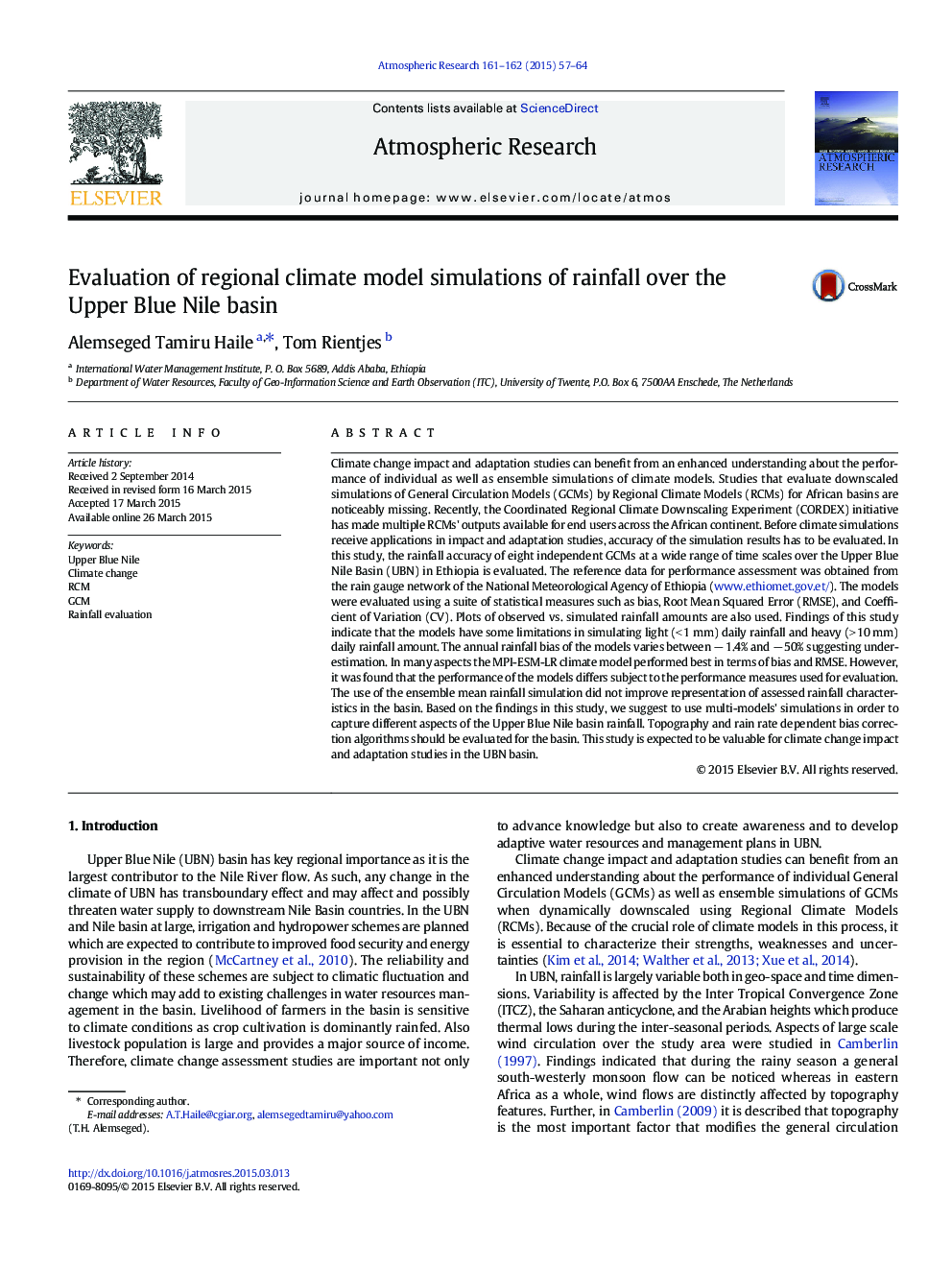| کد مقاله | کد نشریه | سال انتشار | مقاله انگلیسی | نسخه تمام متن |
|---|---|---|---|---|
| 4449664 | 1620513 | 2015 | 8 صفحه PDF | دانلود رایگان |
• The performance of dynamically downscaled rainfall simulations of 8 climate models is evaluated over the Upper Blue Nile (UBN) basin
• The resolution of the evaluated simulations was unprecedented for the study area (50kmx50km)
• It was found that the performance of the models differs subject to the performance measures used for evaluation
• Nearly all GCM models in this study underestimated the mean annual and dry season rainfall amount of UBN
• Use of the ensemble mean of simulated annual rainfall amounts resulted in deterioration or improvement in representation of rainfall characteristics
Climate change impact and adaptation studies can benefit from an enhanced understanding about the performance of individual as well as ensemble simulations of climate models. Studies that evaluate downscaled simulations of General Circulation Models (GCMs) by Regional Climate Models (RCMs) for African basins are noticeably missing. Recently, the Coordinated Regional Climate Downscaling Experiment (CORDEX) initiative has made multiple RCMs' outputs available for end users across the African continent. Before climate simulations receive applications in impact and adaptation studies, accuracy of the simulation results has to be evaluated. In this study, the rainfall accuracy of eight independent GCMs at a wide range of time scales over the Upper Blue Nile Basin (UBN) in Ethiopia is evaluated. The reference data for performance assessment was obtained from the rain gauge network of the National Meteorological Agency of Ethiopia (www.ethiomet.gov.et/). The models were evaluated using a suite of statistical measures such as bias, Root Mean Squared Error (RMSE), and Coefficient of Variation (CV). Plots of observed vs. simulated rainfall amounts are also used. Findings of this study indicate that the models have some limitations in simulating light (< 1 mm) daily rainfall and heavy (> 10 mm) daily rainfall amount. The annual rainfall bias of the models varies between − 1.4% and − 50% suggesting underestimation. In many aspects the MPI-ESM-LR climate model performed best in terms of bias and RMSE. However, it was found that the performance of the models differs subject to the performance measures used for evaluation. The use of the ensemble mean rainfall simulation did not improve representation of assessed rainfall characteristics in the basin. Based on the findings in this study, we suggest to use multi-models' simulations in order to capture different aspects of the Upper Blue Nile basin rainfall. Topography and rain rate dependent bias correction algorithms should be evaluated for the basin. This study is expected to be valuable for climate change impact and adaptation studies in the UBN basin.
Journal: Atmospheric Research - Volumes 161–162, 1 July–1 August 2015, Pages 57–64
